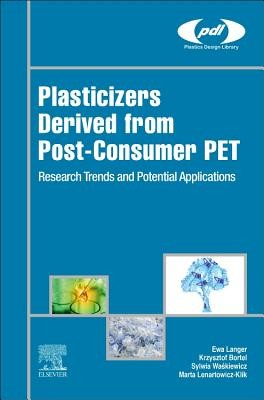
- We will send in 10–14 business days.
- Author: Ewa Langer
- Publisher: William Andrew
- ISBN-10: 0323462006
- ISBN-13: 9780323462006
- Format: 15.2 x 22.9 x 1.4 cm, kieti viršeliai
- Language: English
- SAVE -10% with code: EXTRA
Reviews
Description
Plasticizers Derived from Postconsumer PET: Research Trends and Potential Applications presents a roadmap to the successful use of postconsumer PET to obtain plasticizers for later use, a proposal which presents both economic and sustainability advantages. Based on the results of the latest research into the development of chemical recycling techniques of PET waste, this book describes techniques where the plasticizer obtained can be utilized for value addition in PVC and other polymers.
In addition, the book provides basic introductory information on the role of plasticizers in the modification of polymers, basic quality requirements, and the latest trends in the synthesis and use of plasticizers in industry, also presenting the available methods of PET recycling, with particular emphasis on chemical recycling, analysis of the PET market, the availability of postconsumer PET, and its value as a raw material for other products.
Based on the authors' research, the book discusses the use of postconsumer PET in the synthesis of monomeric and oligomeric plasticizers. Synthesis conditions are shown in detail, and the influence of the structure of synthesized softeners on their basic quality parameters are assessed and compared with selected commercially available products. In the final sections, the book covers the economic challenges and benefits of this process and its application to newly developed products.
EXTRA 10 % discount with code: EXTRA
The promotion ends in 22d.15:40:32
The discount code is valid when purchasing from 10 €. Discounts do not stack.
- Author: Ewa Langer
- Publisher: William Andrew
- ISBN-10: 0323462006
- ISBN-13: 9780323462006
- Format: 15.2 x 22.9 x 1.4 cm, kieti viršeliai
- Language: English English
Plasticizers Derived from Postconsumer PET: Research Trends and Potential Applications presents a roadmap to the successful use of postconsumer PET to obtain plasticizers for later use, a proposal which presents both economic and sustainability advantages. Based on the results of the latest research into the development of chemical recycling techniques of PET waste, this book describes techniques where the plasticizer obtained can be utilized for value addition in PVC and other polymers.
In addition, the book provides basic introductory information on the role of plasticizers in the modification of polymers, basic quality requirements, and the latest trends in the synthesis and use of plasticizers in industry, also presenting the available methods of PET recycling, with particular emphasis on chemical recycling, analysis of the PET market, the availability of postconsumer PET, and its value as a raw material for other products.
Based on the authors' research, the book discusses the use of postconsumer PET in the synthesis of monomeric and oligomeric plasticizers. Synthesis conditions are shown in detail, and the influence of the structure of synthesized softeners on their basic quality parameters are assessed and compared with selected commercially available products. In the final sections, the book covers the economic challenges and benefits of this process and its application to newly developed products.


Reviews